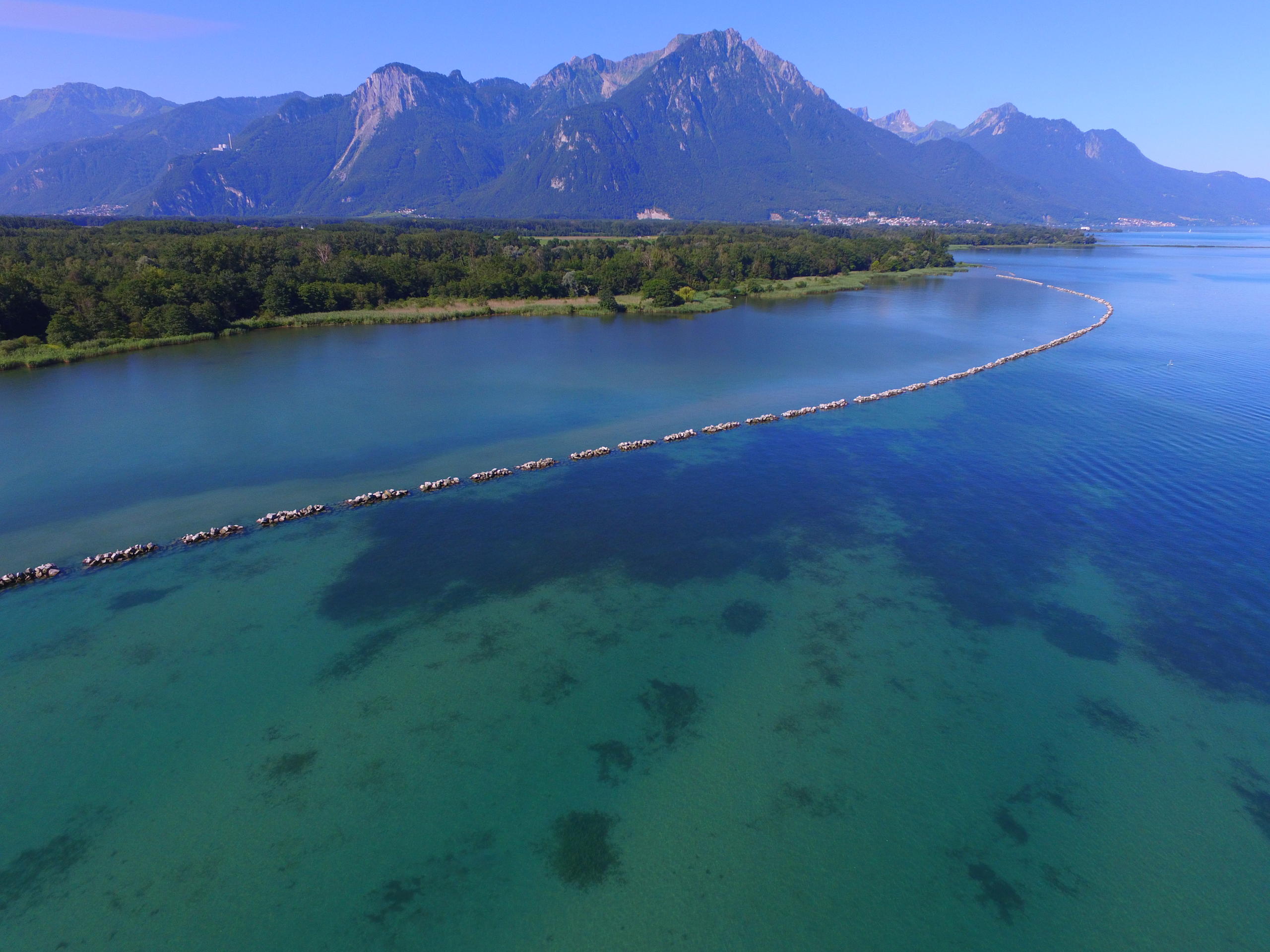
Archaeological discovery confirms Lake Geneva tsunami research

Gallo-Roman remains uncovered by Vaud archaeologists appear to corroborate earlier research about a giant tsunami on Lake Geneva in AD563 triggered by a rockfall and underwater landslide.
A Gallo-Roman house and everyday items recently discovered by Vaud archaeologists in thick mud close to where the River Rhône meets Lake Geneva has enabled researchers to precisely date a catastrophic tidal wave on the lake centuries ago.
Previously, geological evidence had confirmed historical accounts passed down over centuries of an eight-metre-high lake wave that struck in 563, Swiss public television, RTS, reported on FridayExternal link. But there was no archaeological proof to back it up.
However, Gallo-Roman remains recently uncovered at a site near Noville, canton Vaud, appear to add to the growing body of evidence about the tsunami.
“We can see a preserved section of wall made up of blocks connected by mortar that has been displaced,” archaeologist Morgan Millet told RTS.
According to research published in 2012 by the University of GenevaExternal link, a massive rock fall – probably from the Le Grammont mountain close to where the Rhône flows into lake at its eastern end – caused part of the river delta to collapse and slide into the lake.
Historical accounts describe how huge waves then inundated everything on the lake shores, devastated villages, destroyed a bridge and mills in Geneva and passed over the city walls; it is not known how many people were killed.

More
Swiss “underestimate” lake tsunami risks
“The mountain landslide crashed onto sediment on the Rhône plain that was completely saturated with water,” said Philippe Schoeneich, a geologist at the University of Grenoble. “The impact liquefied the sediment, transforming it into a liquid sludge that spread across the plain.”
Cremation remains and everyday objects, which were also found in the mud, have been restored and dated.
“Some of the more remarkable items include a small circular fibula brooch, which is not entirely conserved, but has holes in which you can insert a small chain,” said Millet.
The most recent object is from the fifth century, but the layer of mud contains nothing from 563 or thereafter.
“We have to imagine a violent disaster with between ten and 30 million cubic metres of rock falling from the mountain onto the plain. For tsunamis, like any other natural disaster, not much is left standing afterwards,” said the archaeologist.
In 563 a massive rock fall at the eastern end of Lake Geneva caused part of the Rhone delta to collapse and slide into the lake, triggering a tsunami that caused considerable destruction around the lake.
In 1584 an earthquake near Aigle in canton Vaud in the Rhone Valley damaged villages along the north-eastern shore of Lake Geneva, and caused a rockslide that killed 320 people and a tsunami that reportedly flooded shorelines in Villeneuve, Lausanne and Geneva.
On September 16, 1601 a magnitude six underwater earthquake in Lake Lucerne triggered huge waves which left the city of Lucerne under water.
In 1687 a spontaneous collapse of the Muota river delta near Brunnen triggered a five-metre tsunami which caused widespread flooding around Lake Lucerne.
On September 2, 1806, a huge rock fall from the Rossberg mountain in central Switzerland destroyed the village of Goldau, claiming 457 lives. The easternmost part of the rock mass hit Lake Lauerz, triggering a 15-metre-high tsunami. Around ten people died in the resulting flood on the southern shores of the lake.

In compliance with the JTI standards
More: SWI swissinfo.ch certified by the Journalism Trust Initiative































You can find an overview of ongoing debates with our journalists here . Please join us!
If you want to start a conversation about a topic raised in this article or want to report factual errors, email us at english@swissinfo.ch.